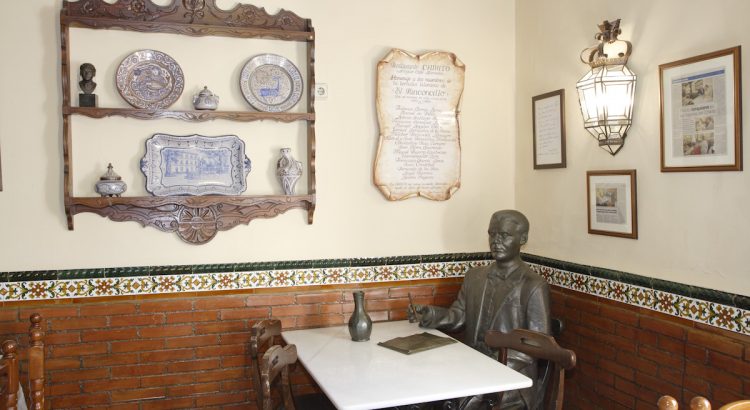Rarely has such a small space generated so many groundbreaking ideas or given rise to so much literature and studies as the literary gathering of El Rinconcillo, a few square meters under the staircase leading to the upper floor of the Alameda cafe, an establishment now demolished whose lot is now occupied, just as it […]
Lorca´s routes
San Nicolás Viewpoint
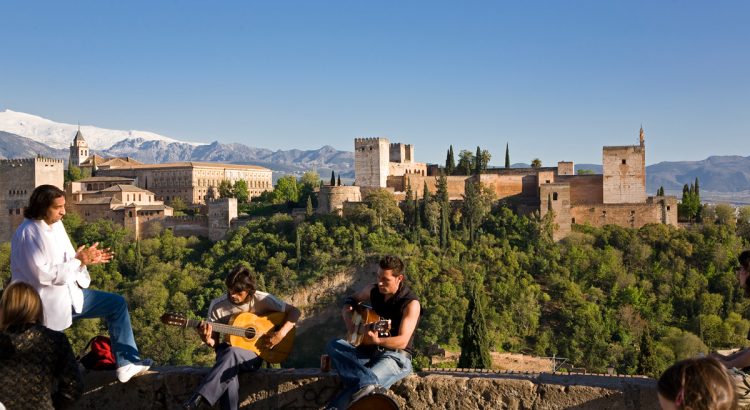
The ensemble formed by the church of San Nicolas, the cistern and the small square with its imposing viewpoint define the relationship of beauty and harmony of the Albaycin district, the Alhambra, the Darro valley, the old city and the horizon of the Vega. The church that gives its name to the surroundings consists of […]
Generalife
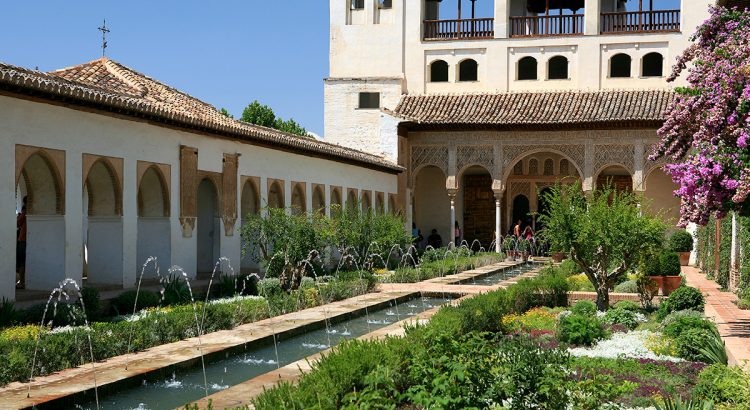
The Alhambra and the Generalife are linked to García Lorca for many historical reasons. But the Generalife and, in particular, the Paseo de los Cipreses (Promenade of the Cypress Trees) and the Escalera del Agua (Water Staircase), have a link that dates back to the summer of 1924, when Juan Ramón Jiménez, accompanied by his […]
Hotel España in Lanjarón
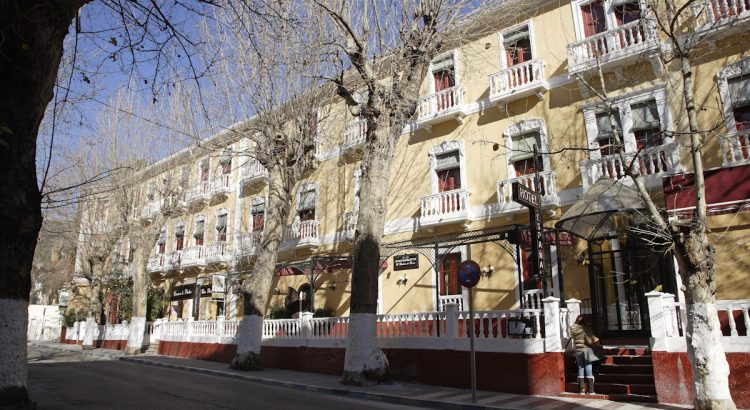
The García Lorca family were regular summer visitors to Lanjarón. From 1924 until 1935, Federico García Rodríguez and siblings Federico, Francisco, Concha and Isabel accompanied their mother, Vicenta Lorca Romero, affected by hepatic colic, to the Hotel España, the most luxurious of all accommodations in the Alpujarra, with the purpose of taking the waters in […]
Balneario de Lanjarón
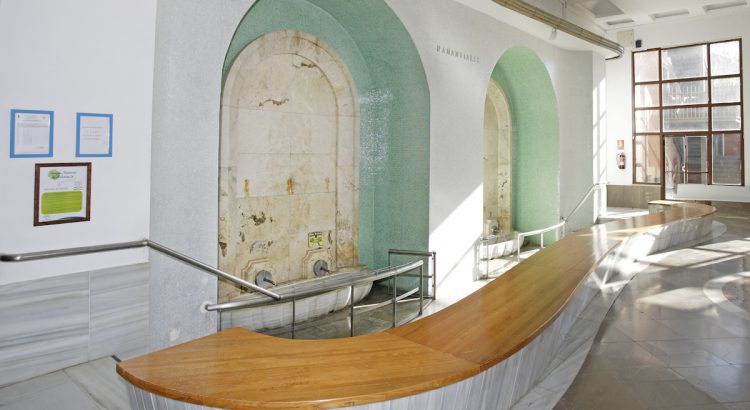
Vicenta Lorca Romero, prone to problems arising from liver failure, was the driving force behind the annual visits of much of the García Lorca family to the Lanjarón Spa, in the foothills of the Sierra Nevada, where the spring waters come from. The curative sessions soon became a pretext for a family vacation between 1924 […]
Rosales’ Family House
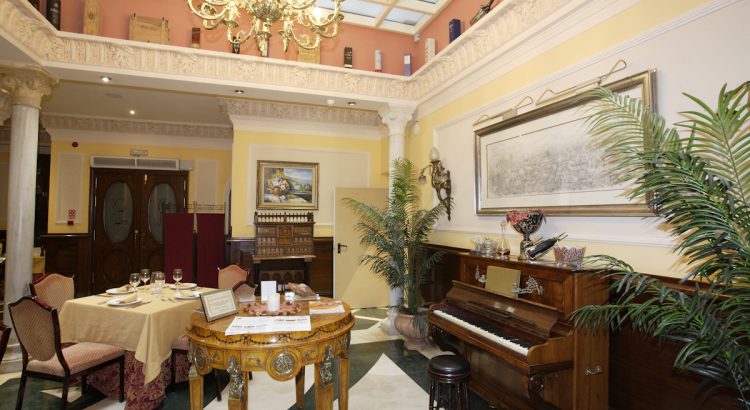
The house of the Rosales Vallecillos family was the place where Federico García Lorca took refuge on August 9 after the violent and successive searches perpetrated in the Huerta de San Vicente (San Vicente Farmhouse) in the days following the uprising of July 18. The poet believed that the Rosales brothers’ links – including Luis, […]
Teatrillo (Little Theater) of the Alhambra Palace Hotel
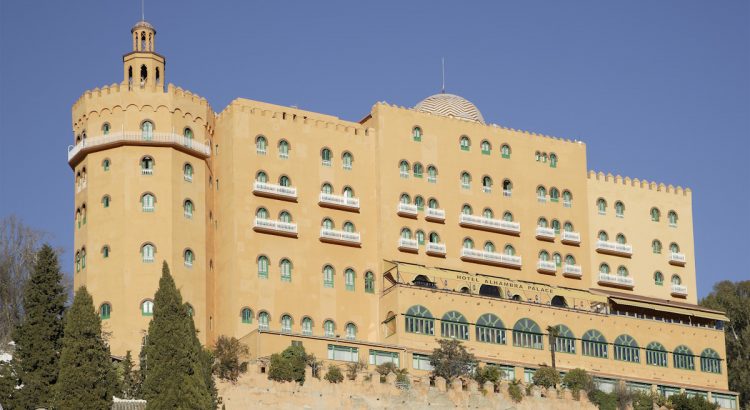
The most emblematic hotel in Granada, promoted by the Duke of San Pedro de Galatino in the heart of the Alhambra in Granada and inaugurated on December 31, 1909, in the presence of King Alfonso XIII, is closely linked to the history of music in general, flamenco in particular, and Lorca’s imaginary. The establishment, a […]
Mariana Pineda Square
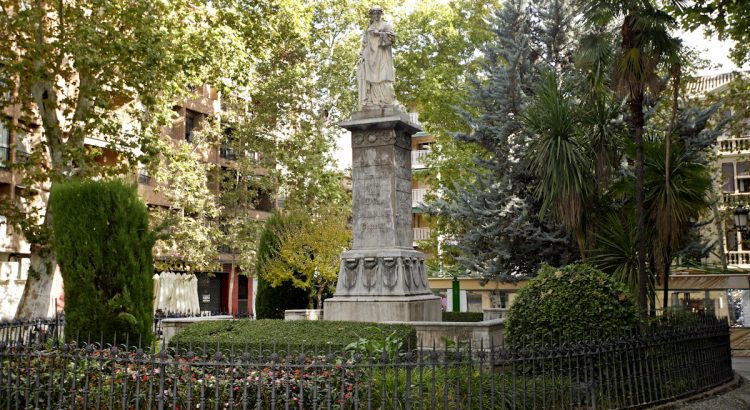
Mariana Pineda Square (emblematic heroine of the liberal and romantic Granada) is the central location of the tragic history of this native of Granada. It was located a few steps from the Lorca family home in the Acera del Casino. In fact the poet used to witness the daily comings and goings of the square […]
Padre Suárez College
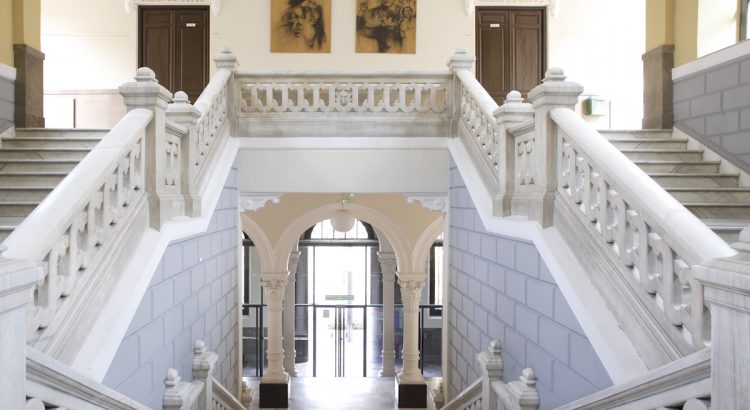
The former Instituto General Técnico (General Technical Institute), founded in 1845, kept the academic records of Federico García Lorca as a high school student and of his brother Francisco, as well as other literary personalities such as Francisco Ayala and Ángel Ganivet. A series of delays in the completion of the works prevented Federico from […]
General and Technical College
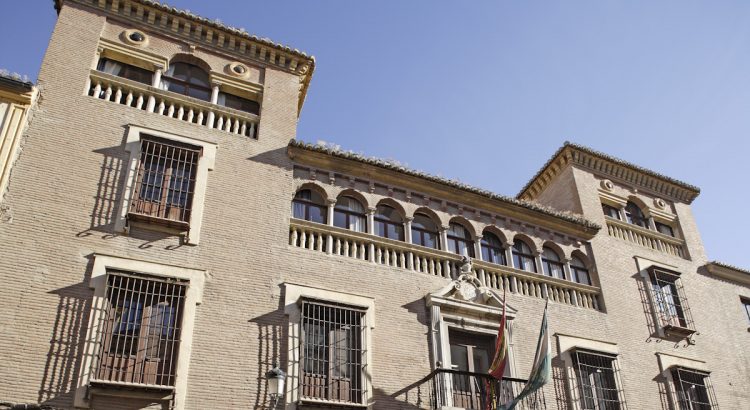
Federico García Lorca went to high school, the first year as a free student and the rest as an official student, at the Instituto General Técnico (General and Technical College) of Granada, then located in the Palace of the Marquises of Caicedo (San Jerónimo, 46), current home of the Royal Conservatory of Music Victoria Eugenia. […]
Fuente de Aynadamar
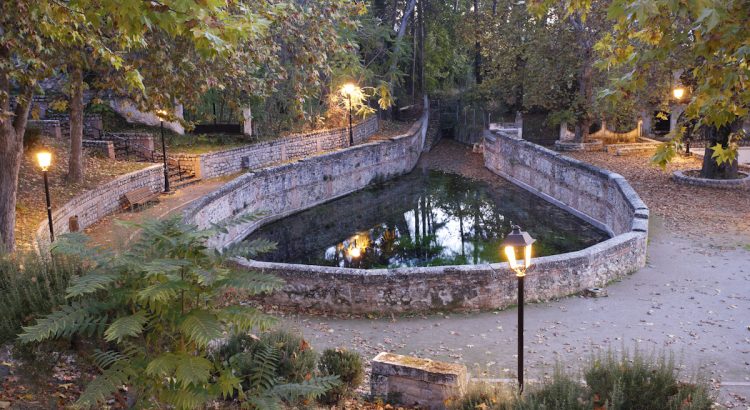
Fuente Grande, Fuente de las Lágrimas (Fountain of Tears) or Fuente de Aynadamar (Aynadamar Spring), according to Arabic terminology, is a fountain located in the upper part of Alfacar (Granada) about two hundred meters from the García Lorca Park, where the olive tree where the burial of the poet was erroneously located in 1979 by […]
Law School
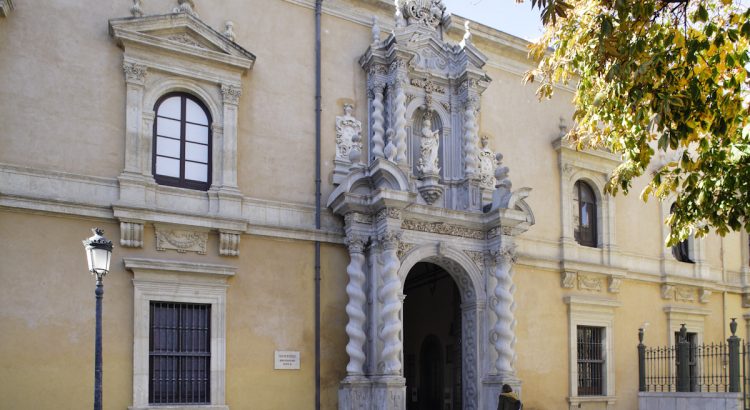
In 1916, after passing the common preparatory course for Arts and Law, Federico García Lorca enrolled at the University of Granada. Although at first he studied both degrees, later, after seeing the increasing difficulties in dealing with certain Arts subjects, he opted for Law, a career in which he graduated more by fortune with certain […]
Gobierno civil 1933-1944
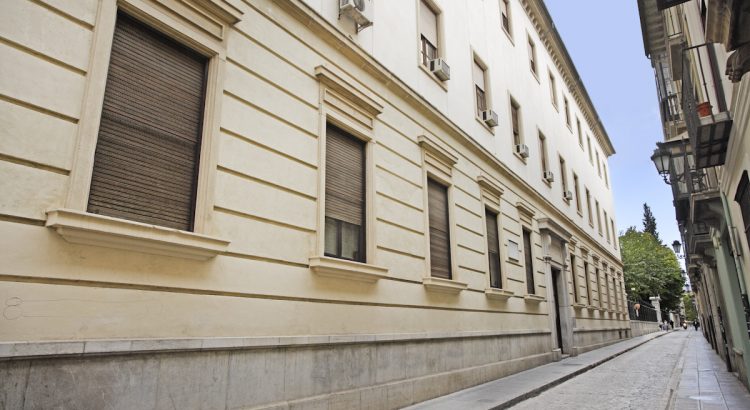
The former Civil Government (Gobierno Civil) of Granada, where Federico García Lorca was taken on the afternoon of August 16, 1936, after his arrest in the house of the Rosales Vallecillos family, had an entrance on Duquesa Street and occupied part of the current Law School. The building, in very poor condition already in the […]
La Colonia
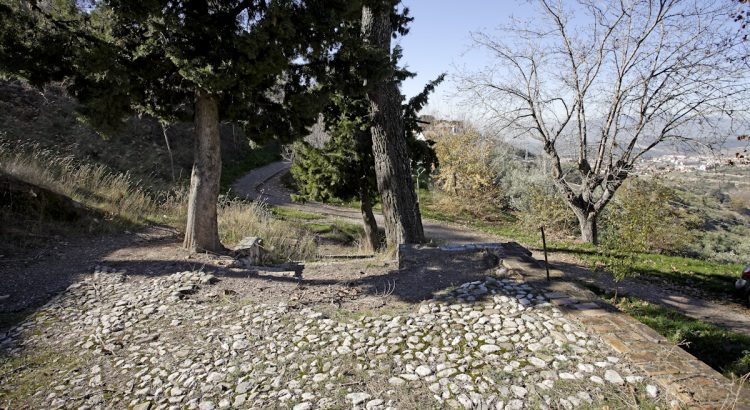
Las Pasaderas de Víznar was, in the years before the Civil War, a picturesque farmhouse with a mill next to the Acequia de Aynadamar (Aynadamar irrigation channel) located at the exit of the village, on the road to Alfacar. In the summer of 1934, the authorities of the Republic turned the farm, also known as […]
Fuente de la Teja
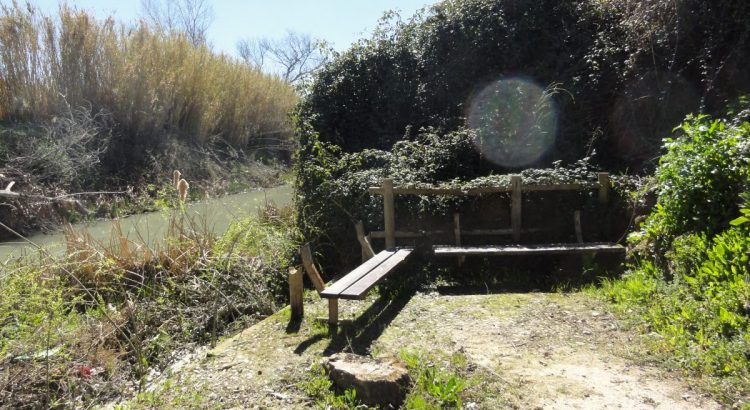
Fuente de La Teja (La Teja Fountain) is a tiny spring located on the right bank of the river Cubillas, about 500 meters from Valderrubio, where the young Federico García Lorca retired to write. Much of his youthful work originated there. The river is backwatered when passing by the fountain and flows with a sweet […]
El Polinario Tavern
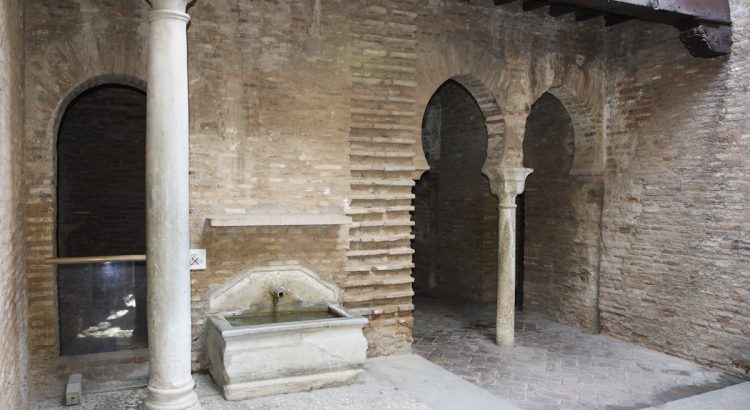
The tavern and store of Antonio Barrios, El Polinario, on Calle Real in the Alhambra, was a place, no longer existing, for meetings and flamenco evenings attended by Lorca, Falla and some of the friends of the El Rinconcillo gathering. The link between the young men and El Polinario was his son, the international composer […]
Guadix, La Calahorra and Purullena
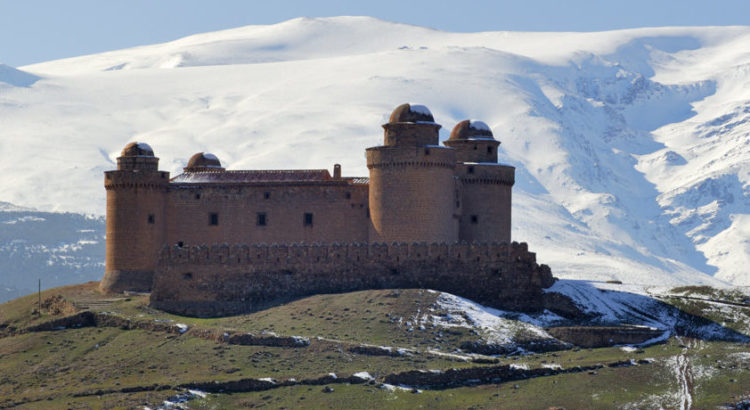
The Granada region of Guadix is part of the itinerary that Federico García Lorca, Manuel de Falla and some of his friends traveled between 1926 and 1928. The interest of the egregious visitors was threefold. On the one hand, the anthropological and historical magnetism that the region projected towards the group of artists and intellectuals; […]
